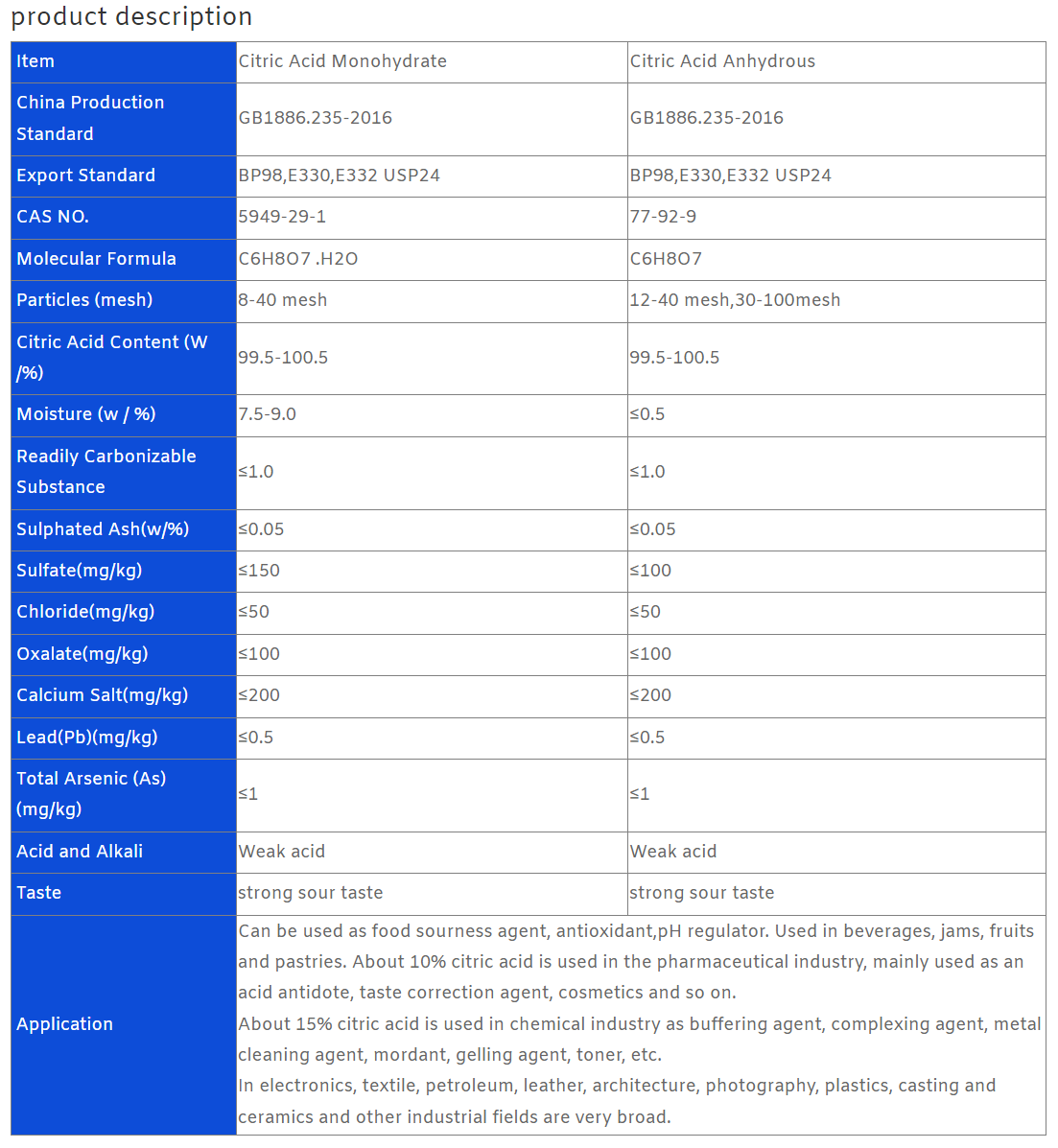Anhydrous citric acid is a kind of intermediate product of natural components and physiological metabolism in animals and plants, and also one of the most widely used organic acids in food, medicine, chemical industry and other fields. It is colorless, transparent or translucent crystal, or granular, particle like powder, odorless, although it has strong acid taste, but pleasant, slightly astringent. It is gradually weathered in warm air, and slightly deliquescence in humid air. Anhydrous citric acid is known as the first edible acid agent, and it is widely used in food industry as acid agent, solvent increasing, buffer, antioxidant, deodorizer and chelating agent. In the field of medicine, effervescent is a popular oral drug ingredient release system. Citric acid reacts with sodium carbonate or sodium bicarbonate aqueous solution to produce a large amount of CO2 (i.e. effervescent) and sodium citrate, which can make active ingredients in the drug dissolve rapidly and enhance taste ability. In industry, the citric acid based metal purification formula can effectively remove oxides formed on the surface of ferrous and non-ferrous metals. As a weak organic acid, it can cause slight damage to the metal surface layer. However, as a metal ion chelator, the migration of gold oxide is accelerated, in many steel leaching systems, In order to eliminate the stress crack of metal oxide and reduce the brittleness of high strength steel to the lowest degree, citric acid was used to remove rust instead of inorganic strong acid.
IUPAC
2-hydroxypropane-1,2,3-tricarboxylic acid



